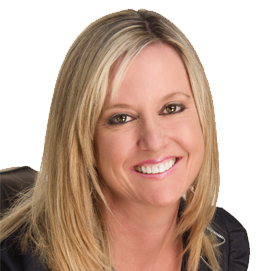Paula Rutledge is the president of Legacy MedSearch, a retained recruitment firm specializing exclusively in the medical device industry. Since 2005, Paula and her team have successfully matched employers and candidates across the clinical and technology spectrum, from orthopedics, spine, neurology, cardiology and ophthalmology to drug delivery, haptic robotics, healthcare IT and many others. We sat down with her recently to discuss the biggest trends she sees in medical device industry hiring today.
You started your firm in 2005. What were the hiring trends at the time and how do they compare to today?
It was a very candidate-driven market when we started because the economy was still eking out its last few good years. People were receiving multiple offers, and if you could steal someone away from a competitor, it was good day. Then the economy tanked and things changed dramatically. Today, we are seeing a very candidate-driven market again, so we’ve really come full circle.
Besides a robust market for candidates, what other trends are you seeing?
One mega-trend we’re seeing is the growing bifurcation of traditional medical devices – hips, knees, etc. – and medtech. We’ve now got Google, Apple and other consumer technology giants entering the industry. We’re also seeing new hybrid business models like that at Verb Surgical, a surgical robotics start-up born out of a partnership between Verily (formerly Google Life Sciences) and Johnson & Johnson. These high-tech companies developing anything involving a computer, sensor, robot or battery are really driving hiring today. In fact, we believe that Verb Surgical has quietly hired nearly 100 people recently. That’s huge.
Another mega-trend that’s emerging is more companies being open to hiring people outside of medical devices that might have a P&G, Target or other consumer background. They want to cross-pollinate and bring the consumer side to the table, particularly in sales and marketing, as well as R&D, where user interface is so important.
We all know that another big change in the marketplace over the last several years has been the retirement of baby boomers and millennials entering the work force. How is this affecting medical device and medtech companies’ recruitment strategies?
We warn our clients that there’s little company loyalty in the millennial generation. They will go across the street for about 10 to 20 percent more in compensation. It’s incredible. We’re calling these candidates to entice them with a new opportunity, and we hear more and more, “Yea, I’ve always got my ear to the ground. I’m always open to new opportunities.” The mentality is “this is what feels good now.” This is something older generations just wouldn’t even think to say. But by the same token, companies don’t have the promise of life-long employment, so it’s a two-way street.
We also know that people don’t generally quit jobs only for money. They quit jobs because they don’t like their boss – that’s the most prevalent reason that we’ve seen in our work, and it’s been documented. Other reasons are that they feel like they’ve hit a ceiling, there’s too much travel or there’s no opportunity for advancement. Companies have to realize they have internal constituents in their employees who need to feel as much love as the customers they are trying to serve. Everyone wants a Google atmosphere and a Google paycheck. Now that Google is in medtech, I believe that companies are going to have to start offering more in both compensation and flexibility. They are really going to have to address long-term career paths and do a better job of making their employees feel wanted and challenged.
Is there anything else that you think our audience should know?
We are in virtual full employment now, with a national unemployment rate of about four percent according to the Bureau of Labor Statistics. But if you look more deeply at the data, there are two factors that many people aren’t aware of. First, the unemployment number is calculated based on ages 16 to 64. Our clients are hiring people that are predominantly ages 25+, and when you look at this age group – especially for people with college degrees – there is a virtual zero unemployment rate. In most major markets, for college educated individuals in the medical device sector, and particularly SIC codes 3840 and 3841, we have more jobs than active candidates.
At the same time, salaries are going up incredibly quickly and appreciably. For example, quality and regulatory salaries have been going up substantially over the last two years, although they are starting to level off. We’re having to have really hard conversations with our clients now. I show them the data and ask, “Do you want a C candidate or an A candidate?” The days of 2008, 2009, 2010, when you could pick somebody up for a lower salary because they were happy to have a job, are gone. There are very few people we talk to right now who aren’t working. In this kind of environment, employers need to prepare for hiring or retention bonuses, long-term incentives, stretch bonuses and continued investment in their people.
Finally, we tell our clients that in a candidate-driven market, they need to coach and train their current employees in interviewing skills and how to “sell” the company to high-potential candidates. Time kills deals, and long interview cycles cause candidates to lose interest or take other offers. If you find the right candidate, hire them quickly or someone like me will call them up and recruit them right from under you.
Source: Expert Insights: An Interview with Paula Rutledge, Legacy Medsearch
Author: Laura Nobles
